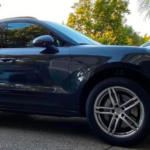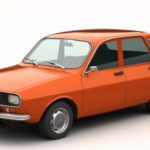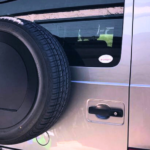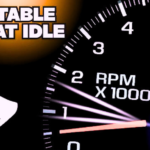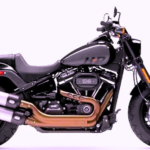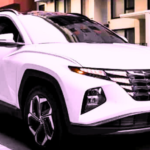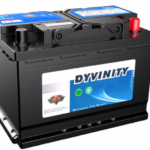Exploring the Enduring Appeal of the Honda Express Scooter
The Honda Express stands out in the vintage scooter world, blending classic aesthetics with the practicality and simplicity typical of early urban transport scooters. honda express scooter First introduced in the late 1970s, the Honda Express series provided an affordable, reliable solution for city commutes. Known for its straightforward design, excellent fuel economy, and compact frame, the Honda Express became an immediate favorite and remains popular among vintage scooter fans and collectors. In this post, we’ll explore the history, key features, nostalgic appeal, and restoration process of the Honda Express, examining why this small yet iconic scooter holds such a unique place in vintage vehicle culture.
A Brief History of the Honda Express
Honda launched the Honda Express in 1977 with the NC50 model, designed as a compact, affordable vehicle suited for quick urban trips. Honda aimed to create a user-friendly ride, making it especially appealing to younger riders and new scooter users. The Honda Express quickly gained popularity for its reliability, ease of use, and affordability, backed by Honda’s reputation for quality.
Over the years, Honda introduced several variants, such as the Express II, which came without pedals, simplifying the design further, and the Urban Express, offering a few feature upgrades tailored to city riders. Each model retained the simplicity and accessibility that defined the original, allowing the Express series to cater to a range of rider needs without deviating from its core mission.
Although production of the Honda Express ended in the early 1980s, it remains beloved by scooter fans and vintage vehicle enthusiasts. Today, these scooters are highly valued for restoration and cherished as symbols of simpler times in city transportation.
Key Features and Specifications of the Honda Express
The Honda Express is known for its straightforward yet effective design. Here’s a breakdown of its main features:
- Engine and Performance:
- Original Honda Express models featured a 49cc, air-cooled, two-stroke engine. This small engine provided enough power for city trips, with top speeds typically reaching around 25-30 mph. While not built for high-speed travel, it’s ideal for urban routes and first-time riders.
- The unique sound and feel of the two-stroke engine add to the nostalgic experience for many riders.
- Automatic Transmission:
- With a single-speed automatic transmission, the Honda Express requires no manual shifting. Riders just twist the throttle to accelerate, making the Express highly beginner-friendly and very easy to ride.
- Fuel Efficiency:
- One of the Honda Express’s strongest selling points was its excellent fuel efficiency, often exceeding 100 miles per gallon. Its fuel-saving design made it especially attractive in the 1970s and 80s, when fuel economy was a big concern for many.
- Pedal-Assist Feature:
- Early models, like the NC50, featured pedals, allowing riders to pedal manually if they ran out of fuel. This was a unique and practical feature, particularly suited to short trips within a neighborhood or city.
- Lightweight and Compact Design:
- Weighing only around 100 pounds, the Honda Express is exceptionally light and easy to handle. Its compact size allows riders to navigate crowded streets and park in tight spaces, making it ideal for urban environments.
- Vintage Look:
- The Honda Express sports a distinctive, retro design, with a simple frame, high-rise seat, and chrome details. The mix of chrome and bright paint colors adds a nostalgic touch that continues to attract vintage scooter lovers today.
Why Vintage Scooter Enthusiasts Love the Honda Express
Even decades after its release, the Honda Express holds a special charm that attracts enthusiasts. Here are some reasons for its lasting popularity:
- Simplicity:
- In a world full of advanced, high-tech vehicles, the Honda Express stands out with its simplicity. Its minimal controls and straightforward design let riders focus on the joy of riding, without unnecessary complications. This simplicity also makes it relatively easy to repair and maintain, even for those without much mechanical experience.
- Affordability and Accessibility:
- The Honda Express was originally priced to be affordable, making it accessible to a wide range of people, including students and new riders. Today, used Honda Express scooters in need of some restoration are still budget-friendly, making them popular with those starting out in vintage vehicle collecting.
- Nostalgia:
- For many, the Honda Express represents a specific time and culture in personal transportation, evoking memories of a simpler era. Riding or restoring an Express brings a sense of nostalgia, making it more than just a scooter—it’s a piece of history with personal connections for those who rode or admired it in their youth.
- Eco-Friendly and Compact:
- Although it’s not electric, the Honda Express’s fuel efficiency and small size make it a greener option compared to larger motorcycles and cars. It embodies a more eco-conscious, minimalist lifestyle that aligns with the current interest in sustainability.
Tips for Restoring a Honda Express
Given its timeless appeal, many scooter fans enjoy restoring Honda Express scooters to their original glory. Here are some restoration tips:
- Locating Replacement Parts:
- Finding original parts can be challenging since the Honda Express was discontinued long ago. Enthusiasts often source parts from online communities, vintage scooter forums, and specialty shops, and some aftermarket companies produce parts specifically for Honda’s vintage scooters.
- Consult a Mechanic or Vintage Scooter Specialist:
- For those new to scooter restoration, partnering with a mechanic familiar with vintage models can be very helpful. Experienced professionals can offer guidance on repairs, engine adjustments, and sourcing hard-to-find parts.
- Invest in Quality Tools:
- Restoration often requires tasks like adjusting the carburetor, cleaning the fuel system, and replacing spark plugs, so investing in a quality toolset is essential. Quality tools can prevent damage to delicate components, making maintenance and restoration easier.
- Join Vintage Scooter Communities:
- Many Honda Express fans connect online to share resources, advice, and even buy, sell, or trade parts. Joining these communities provides valuable support, advice, and camaraderie for those working on Honda Express restoration projects.
- Enhance Cosmetic Details:
- The Honda Express’s vintage look is part of its appeal, so consider focusing on its aesthetic restoration. Repainting the frame, refreshing chrome details, and replacing worn-out seats can make your Honda Express look as good as new.
Conclusion: Why the Honda Express Scooter Remains Timeless
The Honda Express may be a product of the past, but its appeal remains relevant today. With its approachable design, impressive fuel efficiency, and unique style, it’s no wonder this scooter is still cherished by collectors and enthusiasts. Whether you’re a vintage vehicle collector, a nostalgic rider, or simply seeking an affordable and stylish ride for short trips, the Honda Express offers a distinctive experience.
Owning a Honda Express is like holding a piece of transportation history in your hands. It’s a throwback to a time when daily commuting was simple, fuel costs were lower, and scooters were a popular mode of personal transport. Today, the Express stands as a beloved relic of the past, celebrated for its retro charm and mechanical simplicity.
